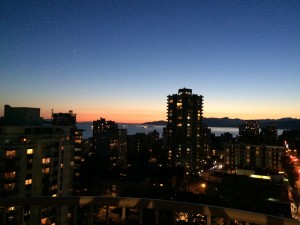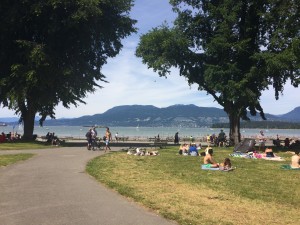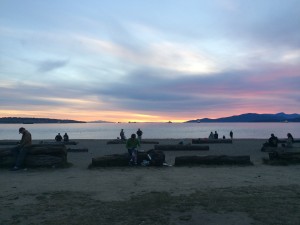Sophie and I are two public relations college students from California, studying abroad in Segovia, Spain, for three weeks in the middle of the summer. We had previously expressed concerns relating to our host mother to our program coordinator, Marian Rubio, an exuberant blonde-banged Segovian with rich burgundy lipstick that pops just as much as her outwardly bouncy personality. But even with her help, the communication barrier continued to make it impossible to live comfortably. Marian is the Site Director of the GEO Study Abroad center in Segovia, vigilantly working to ensure that each student has a rich and exciting homestay experience. She finds families only through recommendations from colleagues and friends whom she trusts, interviews the prospects, and then visits their homes to make sure the housing situation is a comfortable one for students.
“At the beginning it was very hard to find families, but step-by-step people started to know us and trust us,” says Rubio. She has an intensive process she goes through when matching students with host families that involves evaluating housing situations and identifying compatible personalities. Homestays occasionally don’t always work out as planned. “The family can be great, the student can be great, but sometimes the chemistry is not there. Maybe there is a misunderstanding or a difference in thinking. But since I have more than 300 families; I can change the family for the student immediately.”
It is very clear to Rubio that when som![IMG_1810[2]](https://blogs.uoregon.edu/geostudyabroad/files/2016/07/IMG_18102-1ii87yj-300x225.jpg) ething goes wrong with a family, it may not be the fault of the host family or the student. The relationship is always a two-way street. Often the issue is only that of miscommunication or differences in lifestyle.
ething goes wrong with a family, it may not be the fault of the host family or the student. The relationship is always a two-way street. Often the issue is only that of miscommunication or differences in lifestyle.
“Our families are like your families. Some are very rich, and some of them are not. Some of them are very good cooks and some of them are not. Some have swimming pools and some don’t. Just like your families. Different,” says Rubio. This is part of the reason it is so important to keep an open mind when anticipating living with a homestay in another country.
Micah Collamer, a college student studying in Segovia, Spain, is taking three classes in Spanish: art, grammar and history. I met him in the lobby of the globe-shaped Museo Nacional Centro de Arte Reina Sofia in Madrid. I began to explain to him the unfortunate living situation Sophie and I had stumbled into. After exchanging only a few sentences back and forth, we figured out that other than both being students at the University of Oregon, an awkward living situation was something else we had in common.
To my delight, the process he went through to change homestays was fast and painless. He spoke with Marian, explained the issues he was having and went into more detail about what he wanted in a homestay: specifically, a big, family experience. Within the same day, he packed up his bags and was ready to move. “With this [new] family, it is 100% clear. If there is a problem, they are willing to solve it,” says Collamer.
Homestay issues don’t only exist in Europe, or only with American students. Sometimes it’s the other way around. Marina Olalla, the nineteen-year-old daughter of a Spanish mother who has been housing international students for over five years, had her own homestay mishap in America.
“My family was very traditional and conservative and wouldn’t let me do anything without the daughter. Communication with them was difficult; that was the biggest problem,” says Olalla. So, just like Micah, Olalla left in search of a new family to spend the rest of her stay with in the United States.
Olalla can also see the mistakes that she made, “I think that everyone has to make their point, and I never expressed myself. I should have expressed how I felt more often. I felt they got used to me not standing up for myself.” Olalla’s experience shows that it isn’t only the host family’s job to make sure communication flows between both parties. It is just as important for students to express their own concerns and doubts as well.
There are multiple reasons why someone would choose to be a host for a student. For many families, it’s a chance to broaden their minds and experience new cultures without traveling.
“There are different motivations for different families, because some have children and they want the contact between the students and the children because it is a rich experience. You can learn about other cultures, which is always great, because we teach students, but we also learn from students all the time. Our students experience our culture, but we can also share the two cultures,” says program coordinator Rubio. Emi Del Rio, an English professor at a university in Segovia, Spain, who became my new homestay-mother, says, “I guess that hosting students is a way of sharing our lives with other people, just to know how people usually live in Spain. We like being in contact with young people because we can see it in ourselves that we have young minds as well.![DSC_7123[2]](https://blogs.uoregon.edu/geostudyabroad/files/2016/07/DSC_71232-1elmefk-300x201.jpg) We enjoy just knowing other cultures and talking to other people from different nations. We love that. We love being surrounded by people,” says Del Rio.
We enjoy just knowing other cultures and talking to other people from different nations. We love that. We love being surrounded by people,” says Del Rio.
Del Rio’s attitude and open-mind towards new cultures is exactly why Sophie and I now feel so at home in their cherry wood embellished flat. Their little, yet elegant apartment, adorned with photos, trinkets and memories of their travels, is constantly infused with the smell of traditional Spanish cooking, all thanks to her husband Pedro. Their friendliness and willingness to accept people of all cultures and nationalities is just as noticeable in the air as Pedro’s cooking. The two of them have yet to experience any problems with students. “We both have a positive attitude, we are open and ready to help,” says Del Rio. “But students also need to be open minded and understand and accept the house rules. That’s the idea.”
As my two weeks here in the Del Rio household come to an end, I can’t help but stare at my cluttered suitcase, sitting amongst even more souvenirs, clothes and bottles of wine that Emi recommended, with the urge to keep it all unpacked. Thanks to Emi and Pedro, returning to the U.S. will be bittersweet, as we are undoubtedly leaving a second home here in Segovia.
The Del Rio’s have future plans to visit California; Sophie and I have invited them into our own homes without hesitation.
— Alletta Simons, Segovia, Spain



